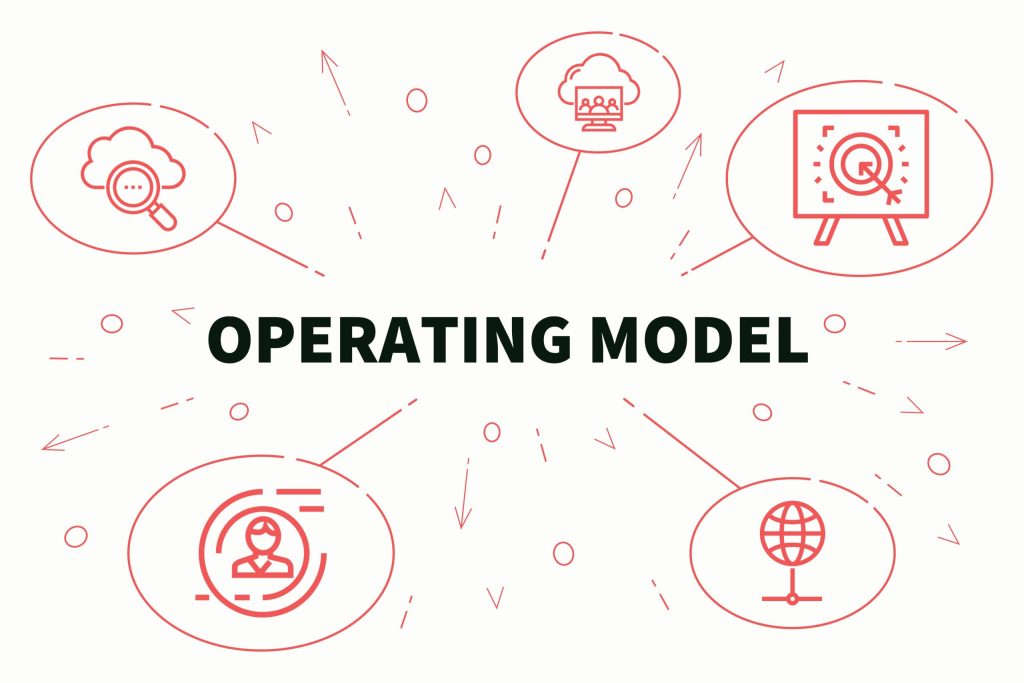An Intelligent Automation Operating Model is the Key to Enterprise Scale and Benefits Realization

Governance is a key component of any intelligent automation initiative. Building a governance framework requires a clear strategy, risk management, stakeholder commitment, and constant self-evaluation. As the automation journey continues beyond a robotics process automation (RPA) pilot, organizations should focus on implementing an Automation Operating Model (AOM) to control efforts, accelerate impact, and drive towards RPA scale. For organizations to successfully deploy intelligent automation, it helps to understand some fundamental governance concepts. What is an Automation Operating Model? What is an Automation Center of Excellence (ACE)? How does the ACE work within the AOM?
Automation Operating Model
From a business standpoint, an Automation Operating Model includes the people and structure needed to define an automation program’s standards, methods, and guidelines. Executive stakeholders drive the AOM, and objectives are shared to determine how all participants will interact based on their roles and requirements of the AOM. A sample AOM structure and basic responsibilities may look like the following:

From a functional standpoint, an Automation Operating Model provides the vision, strategy, and execution to ensure continued sponsorship for intelligent automation throughout the enterprise. It outlines the governance and support structures needed to scale bot deployment. Furthermore, it provides consistent and wide-reaching communication with the Automation Center of Excellence to assess new capabilities, align with IT and security, and enforce best practices. That’s right—an ACE is a component of the AOM.
Automation Center of Excellence
An Automation Center of Excellence (ACE) is a mechanism within an AOM that ties together elements of success in a centralized or federated fashion to ensure the people, process, and technologies within the AOM framework are all moving in the same direction and generating impact in a scalable manner. The ACE within the AOM also helps increase awareness of automation, drives continuous improvement of the development lifecycle and quality of production automation, and enforces the standards and requirements of the AOM.
The ACE within an AOM is usually structured with a solid foundation of process and tools and strong pillars of success for strategy, development, enablement, and support. These pillars help support the AOM’s expectations, timeline and desired Return on Investment (ROI) as the ACE team deploys automation and matures. The ACE structure provides the method to guarantee a continuous output of automation based on RPA candidates and pipeline, development capabilities, and future scalability.
AOM Recommendations
Once an organization moves beyond the ideal of “what bot do we build first” to the concept of “how do we generate the most impact” through automation, the Automation Operating Model becomes a critical step and component within that journey. A mature AOM will treat intelligent automation as a strategic enterprise capability, develop automation skills company-wide, and ensure a strong communication plan permeates every corner of the organization.
By treating intelligent automation as an enterprise capability managed through an AOM, organizations resist the temptation to make quick wins by implementing automation in a siloed manner. Going bot-by-bot in a silo makes it difficult to scale automation. Focusing on developing intelligent automation capabilities company-wide ensures efficient scalability for service delivery and strengthens the relationship between business and IT. Leadership oversight and communication are also crucial for any automation program. A strong ACE program owner will focus on the key aspects, like cost/benefit return, to determine the next best automation candidate for the ACE. A mature communication plan ensures that everyone within the enterprise understands and can celebrate the performance and success of automation from the Automation Operating Model. If you have one or 1,000 bots deployed, it’s never too late to implement a governance framework through an Automation Operating Model to ensure scalability through automation.